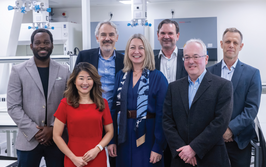Complexity and its Questions
Pipelines are changing, and chemical complexity is on the rise. What can pharma manufacturers do about it?
Charles Johnson | | 4 min read | Opinion

Some people believe that the days of small molecule drugs are over – that pharma is now all about biologics and novel modalities, such as RNA and cell therapies. But this is far from reality. In 2021, the small molecule R&D pipeline was around 4 percent larger than it was the year before, with a record 8000 candidates in development. Interestingly, the increase is slightly skewed towards the earlier phases, with 5 percent growth for preclinical and phase I.
But complexity in all its forms is also increasing within the small molecule drug pipeline. Growing numbers of novel APIs are deemed highly potent. Some are used as drugs in their own right; others are used to make the linker payload component of an antibody–drug conjugate. Either way, their biological activity even at very low doses means that they must be carefully handled to ensure operator and environmental safety, which adds an additional layer of complexity.
Many new small molecule drugs have complex chemical structures, such as multiple chiral centers or tricky functional groups, which also pose manufacturing challenges. Opting for the synthetic route might demand reactions that require challenging reagents or conditions, such as very low temperatures.
Redesigning the synthetic route is sometimes an option. For example, while working on phase I API development for a potential sickle cell disease treatment, one company found that a bromide intermediate in the original route was unstable, requiring low temperatures and complicated purification. Installing and qualifying the new cryogenic equipment would have taken at least six months. Even then, the bromide’s purity was only about 80 percent, which would have produced a low yield of below 60 percent when making the final API. By replacing bromide with chloride, the company fixed the problem; the modified intermediate fitted seamlessly into the route and was more stable. With 97 percent purity, the API yield was increased to 77 percent in the next step, using a simple isolation. And because no cryogenic step was needed, the six-month equipment delay was avoided.
Making the molecule is not the only challenge, however. A substantial – and growing – proportion of developmental drugs nowadays have poor solubility, with the knock-on effect of poor bioavailability. Some active molecules are so insoluble that they are commonly described as “brick dust” compounds. Solid form services experts can help improve the solubility of even these most insoluble compounds, enabling the creation of effective dosage forms with decent bioavailability. Sometimes, a more soluble stable polymorph, a salt form, or even a cocrystal can be found. Other times, smaller particles (via micronization) can help. Amorphous solid dispersions (often achieved via spray drying) are another common strategy. This latter process converts the API into a high-energy amorphous form, usually in combination with a performance-improving polymer. In my view, finding the best option is as much an art as it is a science!
Formulators responsible for designing the dosage forms may add further complexity with a wish list of essential properties. An inhaled drug, for example, will require a tight distribution of the optimal sized particles, which may be challenging to achieve.
In short, increased complexity and challenges go hand in hand. And smaller companies may not have the necessary in-house skills and capabilities to bring complex formulations to the market. Even large companies may need assistance from a niche specialist.
Responding to demand, CDMOs have invested in technology and capacity to enable these complex molecules to be made and modified effectively. Phase-specific, streamlined offerings provide the necessary flexibility for new chemistries to be incorporated seamlessly into a process stream. Many CDMOs can now make and formulate highly potent APIs at more than one site. Some CDMOs are also putting a big focus on solid form services and their ability to overcome solubility issues.
When working with complex molecules and chemistries (especially where the prior art may be limited), you may need to accommodate changes to processes – and that requires flexibility and agility. The sooner a particular challenge is addressed, the less likely it is to cause a major delay in the development timeline. In fact, by integrating multiple technologies and teams into a single workflow, the timeline can often be accelerated.
As an example of the effectiveness of an integrated team working to solve complex chemistry problems, we recently worked on the development and kilo-scale manufacture for a phase 1 asset. The route was convoluted, with eight steps and an overall yield of just 14 percent – but the timeline for the delivery of the first batch was just six months! Our team in China optimized each of the eight steps in the process, while groups in Florida and Switzerland worked on particle engineering and API encapsulation. The result? A scalable kilo lab process delivered about 3 kg of the API with an overall yield of 29 percent inside the six-month deadline.
We dare say you’ll agree that time is of the essence in drug development projects. And we hope you’ll agree that using experts to solve tricky problems is key to getting complex small molecules over the finish line.
Senior Director, Commercial Development, Lonza Small Molecules



















